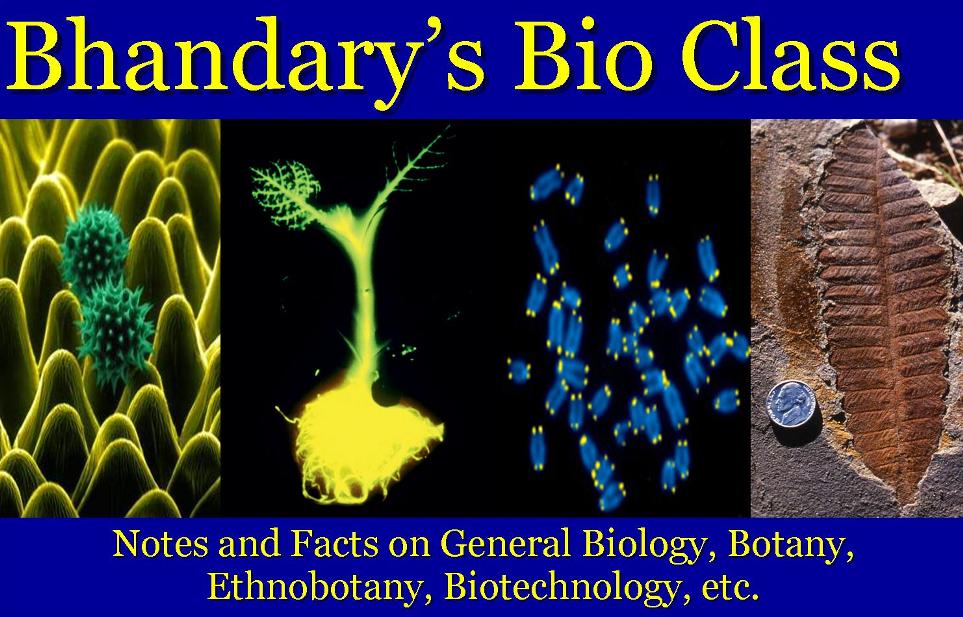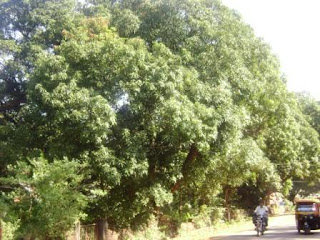Tsunami and Cyclone shock -absorbing Plants!
The Tsunami waves as high as 10-metre (33 feet) which struck the southern and eastern coastal areas of India on 26th December 2004 caused extensive damage in the Andaman and Nicobar Islands and the coastal districts of Tamil Nadu, Kerala, Andhra Pradesh and Pondicherry. According to Government reports, about 10,880 people lost their lives and 1,54,000 houses were either destroyed or damaged entailing losses of about Rs.994 crores. The tsunami destroyed or damaged nearly 75,300 fishing crafts leading to loss of livelihood for thousands and thousands of fishing families. In addition, standing crops of paddy, ground nut, coconut, cashew, mango, banana, minor millets and vegetables were totally destroyed in thousands of hectares and seawater intrusion rendered these productive lands unfit for cultivation.
However, post-tsunami observations indicated that the damage in terms of loss of lives
and properties, in the villages which are behind mangrove wetlands and other shelterbelt
plantations such as plantations of casuarina and of palm trees, was limited. This is because the intensity of the tsunami was reduced by these natural protective barriers. It has been reported that several villages of the Pichavaram mangrove region of Tamil Nadu which are under direct physical coverage of the mangrove wetlands were protected from the fury of the tsunami, though they are close to the sea. The mangrove trees along the first few rows bore the brunt of the tsunami waves and the friction created by these trees and the trees of subsequent rows reduced the speed of the water thereby saving the villages. This clearly indicates that both the mangrove forests and the associated wetlands together played a crucial role in mitigating the impact of the tsunami. Similar observations have also been made in Indonesia, Sri Lanka and Thailand.
Undisturbed mangrove stands in areas such as Rekawa, Kahanda and Kalametiya villages had contributed to reduce the damage caused by the tsunami. . In areas where the mangrove stands were totally or partially cleared in this district, the damage was high.
The protective qualities of mangroves were also observed in 1999 when a cyclone in the Bay of Bengal claimed more than 10,000 lives and washed away several coastal villages in the state of Orissa on India's eastern coast. This was one of the worst cyclones in history with winds of 160 miles per hour. However, amidst all the damages, it was noted that villages in and around neighboring Bhitarkanika were spared much of the cyclone's fury: Bhitarkanika is the second largest mangrove forest in India.
What are mangroves?
Mangroves are trees or shrubs that grow between low tide and high tide marks and beyond, where salt water reaches during spring tides. They form distinct communities commonly known as mangals or mangrove forests.
The mangrove communities occur in tropical subtropical areas where the water temperature does not fall below 200C, and rainfall is in excess of 1250 mm and mountain ranges close to the coast. As general rule dominant mangrove species run parallel to the shoreline or to the banks of the tidal creek systems.
The origin of the name 'mangrove' is not certain. It could be a combination of the Portuguese "Mangue" meaning as individual mangrove tree with the English 'grove'. Scientists theorize that the earliest mangrove species originated in the Indo-Malayan region, spreading westward by ocean currents carrying the floating propagules and seeds to India, East Africa and eastwards to America. That is the reason why Asia, India and East Africa contain more number of species.
In general, plants of the mangrove wetlands are divided into two groups namely, 1) E
umangroves or true mangrove species, and 2)
associate mangrove species or mangrove associates.
True mangroves have a number of adaptations that help them thrive in this ecosystem between land and ocean including adaptations for mechanical fixing in loose soil, respiratory roots and aerating devices, specialized dispersal mechanisms and provision for coping with excess salt concentrations. Mangroves are the only true viviparous plants where the seed remains attached to the parent plant and germinates into protruding axis of the embryo (propagule) before falling from the tree.
On the other hand, mangrove associates are common plants which are found in mangrove as well as other terrestrial vegetation. They are not restricted only to mangrove habitats.
Mangrove forests are one of the most productive and bio-diverse wetlands on earth. Yet, these unique coastal tropical forests are among the most threatened habitats in the world. They are disappearing more quickly than inland tropical rainforest and so far with hardly any public notice.
Many factors contribute to mangrove forest loss, including the charcoal and timber industries, urban growth pressures and mounting pollution problems. However, one of the most recent and significant causes of mangrove forest loss in the past decade has been the consumer demand for luxury food item shrimps or 'prawns' and the corresponding expansion of mangrove destructive production methods of export oriented industrial shrimp aquaculture. Vast tracts of mangrove forest have been cleared to make way for the establishment of coastal shrimp farm facilities. The failure of union government to adequately regulate the shrimp industry, and the headlong rush of multilateral lending agencies to fund aquaculture development, without meeting their own stated ecological and social criteria, are other important reasons for this unfortunate degradation.
Mangroves have long functioned as a storehouse of materials providing food, medicines, shelter and tools. Fish, crabs, shellfish, prawns and eels, snakes and worms are found there. The fruit of certain species are eaten, the best honey is considered to be that produced from mangroves, particularly from river mangrove, Aegiceras corniculatum. Numerous medicines are derived from mangroves. Ashes or bark infusions of certain species can be applied to skin disorders and sores including leprosy, headaches, rheumatism, snakebites, boils, ulcers, diarrhoea, haemorrhages, and many more conditions are traditionally treated with mangrove plants. The latex from the leaf of Excoecaria agallocha can be used on sores and to treat marine stings, the leaves are also used to fishing when crushed and dropped in water, fish are stupefied and float to the surface. Certain mangrove trees are prized for their hard wood and used for boat building and cabinet timber, as well as for tools such as digging sticks, spears, thatching, basket weaving etc, various barks are used for tanning, pneumatophores make good fishing floats and so on.
Mangroves in most of the places are in a degraded state today, owing to indiscriminate felling for domestic purposes, recreational and developmental activities of human being.
Mangroves of the Kali Estuary of Uttara Kannada:
River Kali or Karihole is a major river of the northern coastal Karnataka at lat. 14048'N and Long. 74007'E. It has an estuary extending from Kodibag (S) and Devbag (N) at the river mouth up to Kunnipet (S) and Kadra (N), stretching to a distance of about 30kms. Another small river called Mavinahalla also joins this estuary, converting it into a estuarine complex.
The estuarine complex formed by rivers Kali and Mavinahalla, about three km north of Karwar (Uttara Kannada District of Karnataka) along the West Coast, supports mangrove vegetation along its shores and mud flats. Floristic studies have revealed that the isolated and remnant patches of mangrove forests of this area are rich in species diversity of both eumangrove and mangrove associate plants. L. V. Andrade and V. N. Nayak of the Karnataka University PG Centre, Karwar have identified a total of 130 species representing 106 genera and 50 families of plants in the Kali estuary which involves true mangrove species, associates and accidental mangroves.
Of the 15 species of eumangroves reported from Karnataka, as many as 13 species were found growing here. This includes the major mangrove genera such as Avicennia (3 species), Bruguiera (2 species), Rhizophora ( 2 species), Sonneratia (2 species), and one species each of Aegiceras, Excoecaria, Lumnitzera and Kandelia. Among these, Sonneratia alba, Rhizophora apiculata and Avicennia officinalis are the most dominant species.
A detailed description of all the true mangrove and the most common associated mangrove species of Kali estuary is provided in the following pages which would be useful particularly to students, teachers, foresters, NGO’s and generally to all other people interested in knowing and protecting these biologically unique and ecologically fragile category of plants.
Common true mangroves and associates found in Kali estuary:
| Family | Genus | Species |
| Rizophoraceae
Avicenniaceae
Sonneratiaceae
Combretaceae Euphorbiaceae Myrsinaceae
Acanthaceae Pteridaceae Fabaceae
| Rizophora
Bruguiera
Kandelia Avaicennia
Soneratia
Lumnitzera Excoecaria Aegiceras
Acanthus Acrostichum Caesalpinea
Dalbergia
Derris
| R. apiculata R. mucronata B. gymnorrhiza B. cylindrica K.. candel A. officinalis A alba A marina S. Caseolaris S. alba L. racemosa E. agallocha A. corniculatum
A. ilicifolius (AM) A. aureum (AM) C. crista (AM) C. bonduc (AM) D. spinosa (AM)
D. trifoliate (AM) D. scandens (AM)
|
























